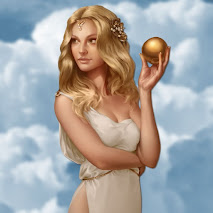The Roman Pantheon is a rich tapestry of gods and goddesses, each with their own unique attributes, stories, and associations. From the father of the gods, Jupiter, to the goddess of love and beauty, Venus, these deities played a central role in the mythology and religion of ancient Rome.
In this blog post, we will explore some of the major gods and goddesses of the Roman pantheon, their origins and significance, and their depictions in art and literature.
Jupiter, King of the Gods
Jupiter was the king of the gods and the most powerful deity in the Roman pantheon. He was associated with thunder, lightning, and the sky, and was often depicted with a thunderbolt in his hand. Jupiter was also the protector of the Roman state and oversaw matters of law, order, and justice. He was often worshipped alongside Juno, his wife and queen of the gods, and Minerva, the goddess of wisdom and war.Mars, God of War
Venus, Goddess of Love and Beauty
Venus was the goddess of love and beauty and was often depicted as a beautiful woman adorned with flowers and jewelry. She was said to have been born from the sea foam and was associated with fertility, passion, and desire. Venus was a popular deity in ancient Rome, and her temples and shrines were often adorned with erotic artwork and sculptures.Mercury, God of Commerce and Communication
Diana, Goddess of the Hunt
 |
| Diana, Goddess of the Hunt |
In addition to these major gods and goddesses, the Roman pantheon also included a host of other deities, such as Bacchus, the god of wine and fertility, and Neptune, the god of the sea. Many of these deities had their own unique stories, attributes, and associations, and together they formed a rich and diverse tapestry of myth and legend.
Conclusion
The gods and goddesses of the Roman pantheon were not only important figures in ancient religion and mythology, but they also played a significant role in shaping the culture and worldview of ancient Rome. Their influence can be seen in everything from art and literature to politics and philosophy, and their legacy continues to resonate with modern audiences today.




